OCTANE
Interesting case to the north of the CWA today showing different layers that were flowing near surface and aloft. Was able to use the estimated motions to get a quick idea of how quickly the airmass over the Atlantic was moving to the SE. Could use this to get a quick estimate for when this airmass may clash with the seabreeze front which could lead to additional convection that fires near my CWA (TBW).


ProbSevere v3
Great example of a marginal case where I considered issuing a severe thunderstorm warning. Core had pulsed significantly, showing 50-60 dBZ at the -20C isothermal layer. MESH was showing upwards of 1” of hail, but my experience in the south tells me that MESH will overestimate hail size. VII had a decent burst at one point, but biggest question mark to everything was how long core could hold together to keep hail aloft, especially given lack of shear (generally <30 kts EBS, little to no storm relative helicity or chance for any updraft organization or rotation). My bigger concern for warning was derived from the potential wind threat of the core falling out quickly, with DCAPE values analyzed between 5-700 J/kg.

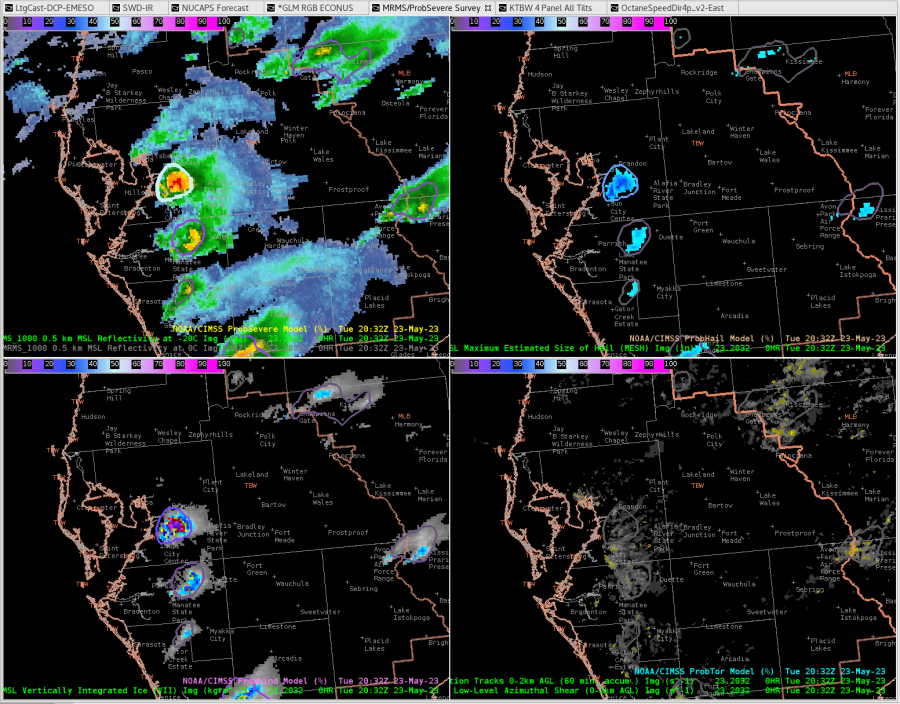
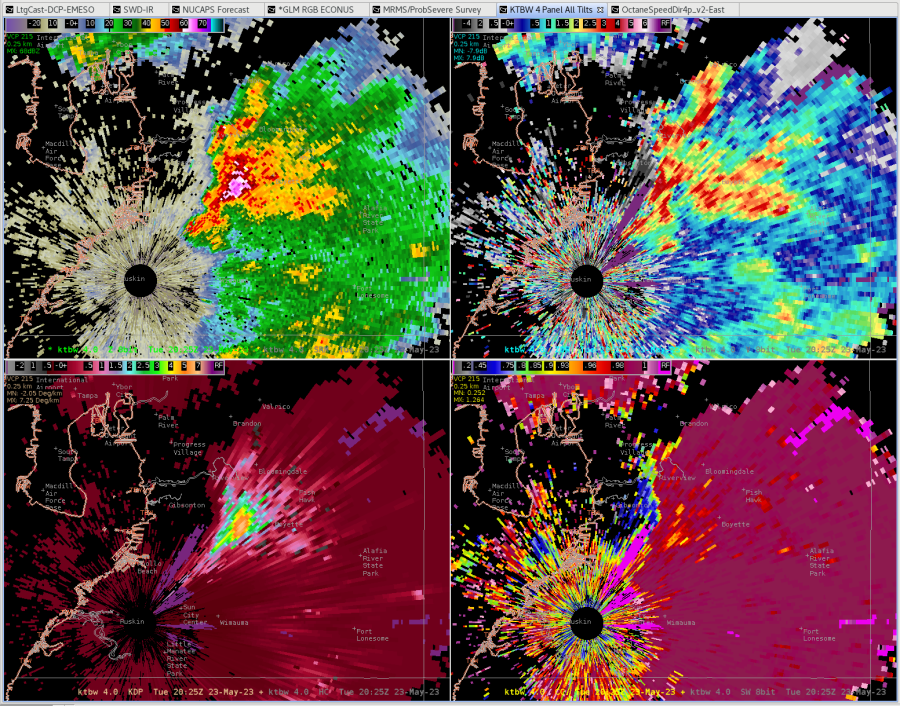

Probseverev3 topped out around 51%, which matches pretty well with my overall feeling of the situation, where I was already on the fence. Hail was the primary driver however, where I would have been a little bit more concerned with winds. That said, being right by the radar gave a good sample of winds as the storm fell, and they topped out at a whopping 32 kts. Hail was eventually reported at 0.5” near Riverview.

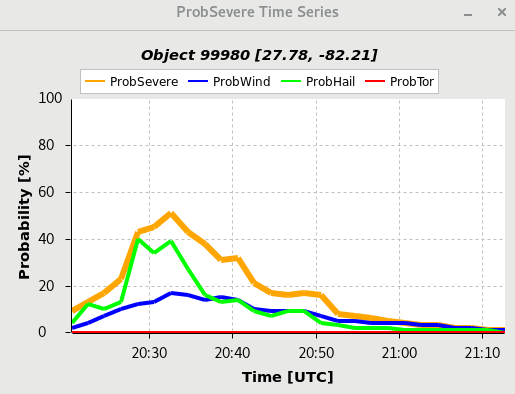
Otherwise, was using ProbSevere in combination with the OCTANE speed products for triage of storms, using the divergent signatures in OCTANE to pick out storms to quickly monitor and ProbSevere for continued development.
GLM Outage and ProbSevere
Due to a software error during an update, the GLM data dropped out for a few hours, which is an input into the ProbSevere model. It was good to see that ProbSevere seemed to remain well calibrated despite losing the data. I observed no large spikes or increase in the overall probabilities when the data was added back in – just a few small increases in some places. Data outages are not uncommon, so I think it is good that the model continues to perform well in the absence of a product.
Octane View of an Updraft



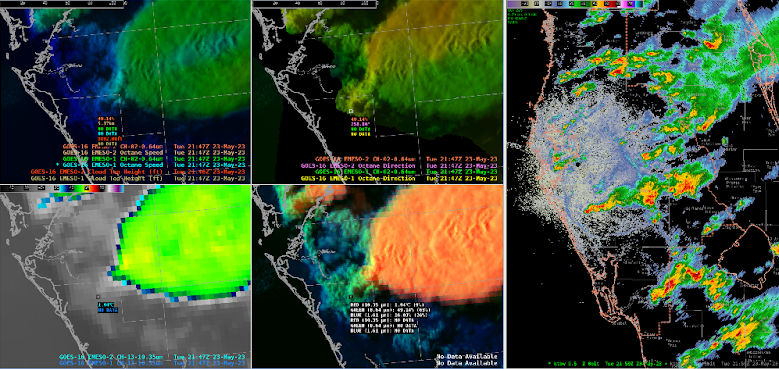
The sequence of pictures above show the speed and height of clouds within the updraft core of a thunderstorm that was moving slowly along the sea breeze front at the surface but was encountering faster winds aloft, giving a bit of a picture of the hodograph.
ProbSevere High Overall Prob with lower hail/wind

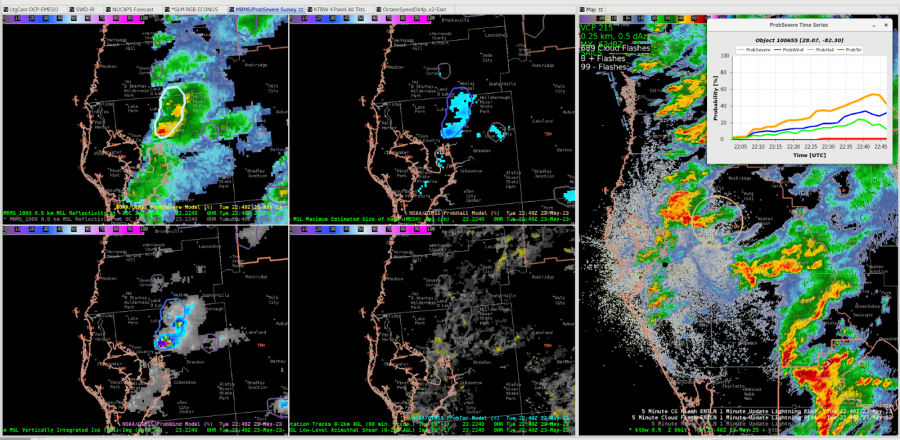
Interesting case where this storm ended up having one of the highest ProbSevere thresholds on the day I saw (54%) despite having both wind and hail thresholds that remained well below 40%. It makes sense that these probabilities would “combine” in a sense in the overall probability, but this definitely was not the “storm of day” or anything, with a less powerful overall updraft and core when compared to several others.
This continued to have relatively higher probabilities as shown below, especially in the wind, despite once again looking less impressive than others. While these cores did produce some 30-35 kt winds per radar, they never really approached severe limits (IRIS obs showed peak winds of 30-33 mph at various stations around the area). Wondering if the unique set-up, which led to some pretty high EBShear values that may not be truly realized by the updrafts, was leading to some higher values in the model.
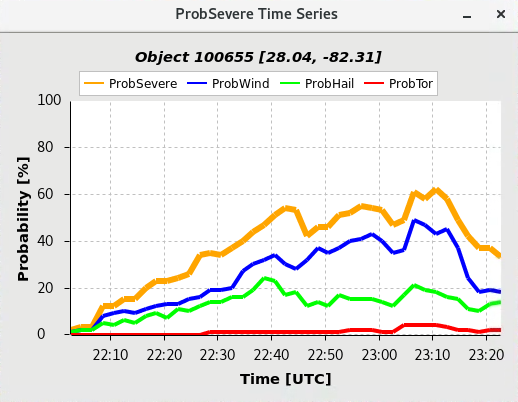

The overall theme of today is that convection in the south is hard.
– Carl Coriolis














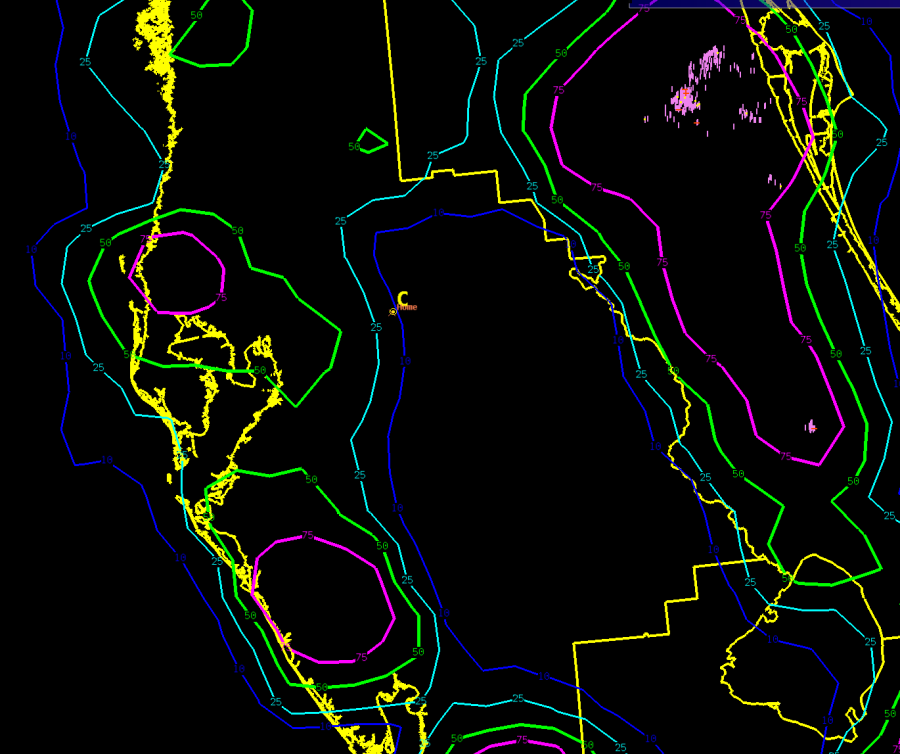
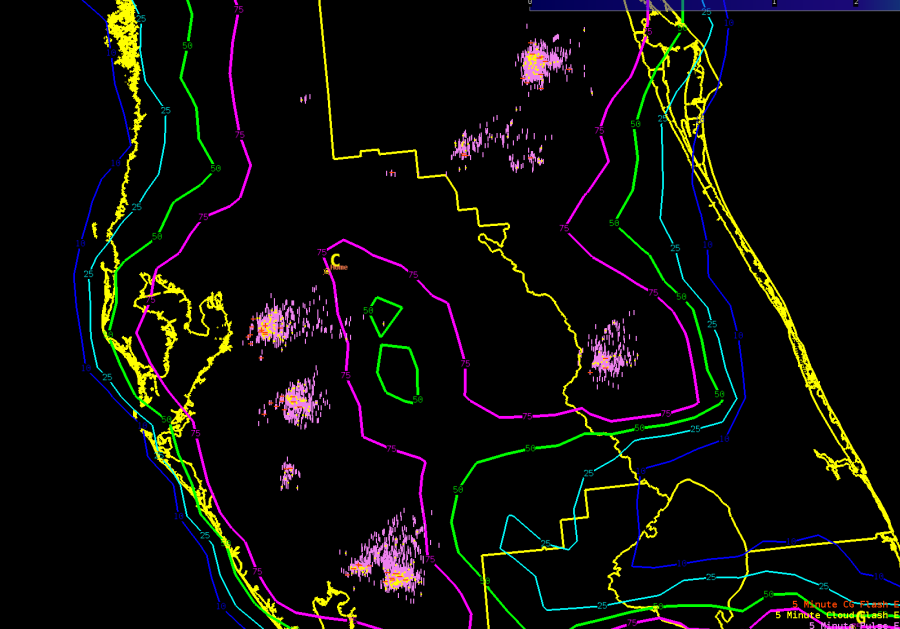
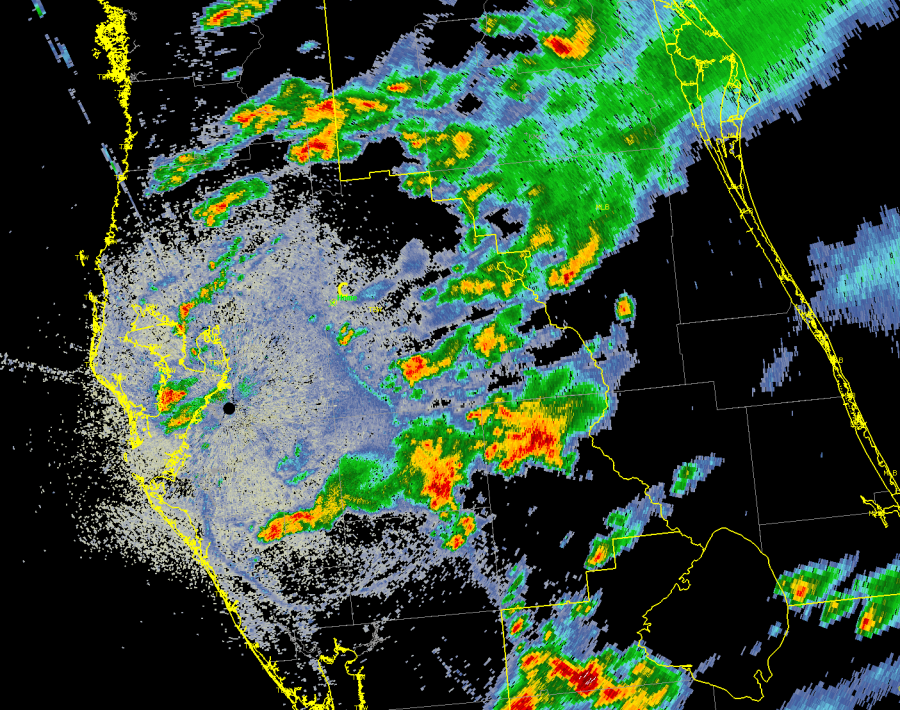
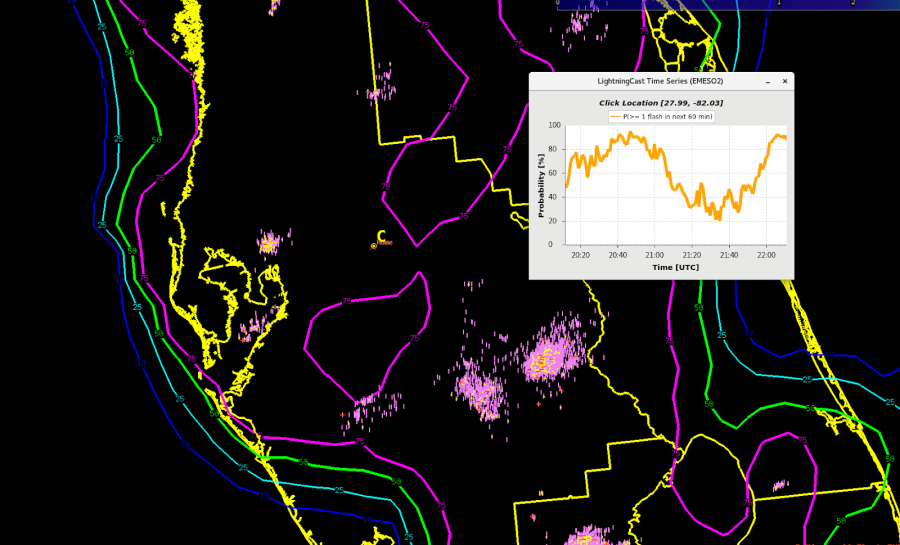
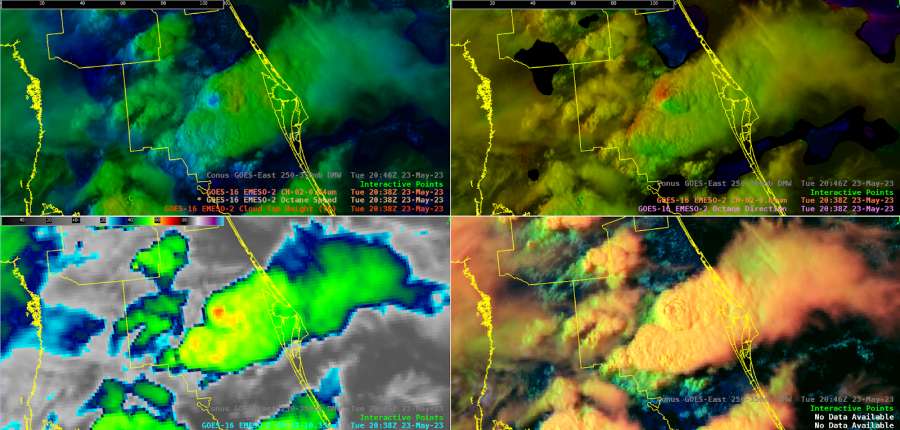

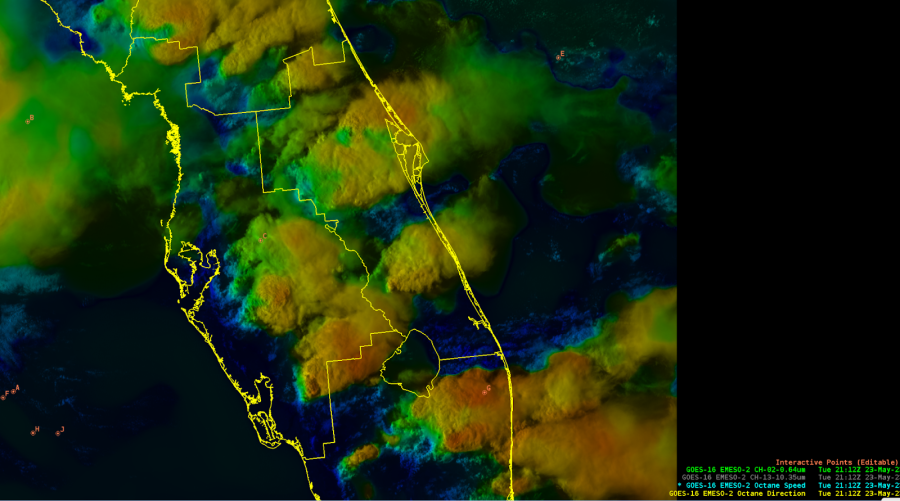
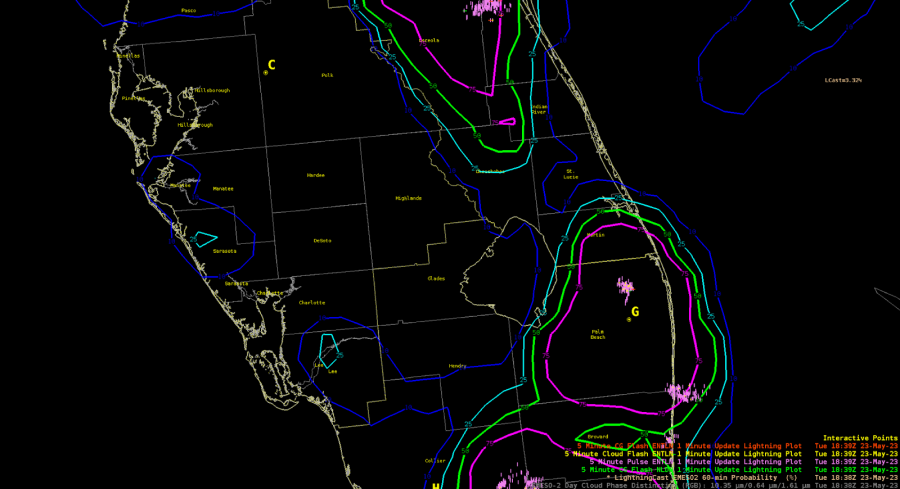
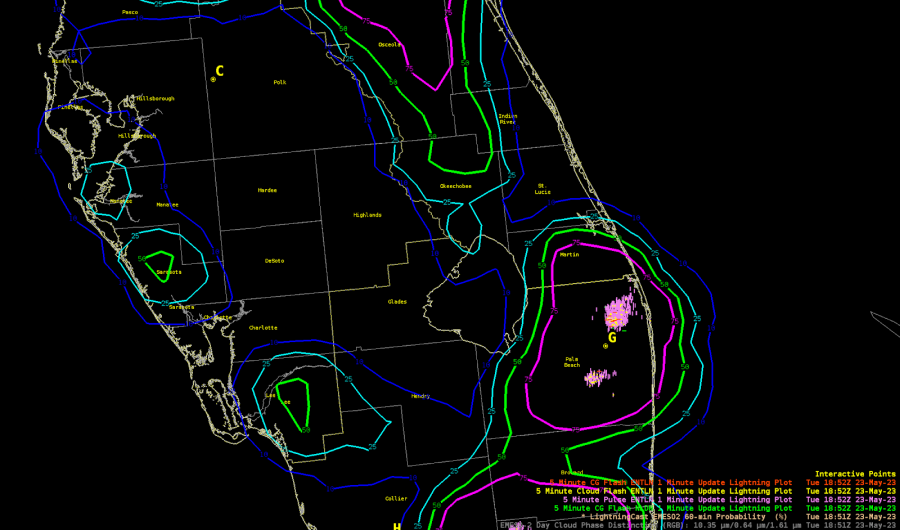
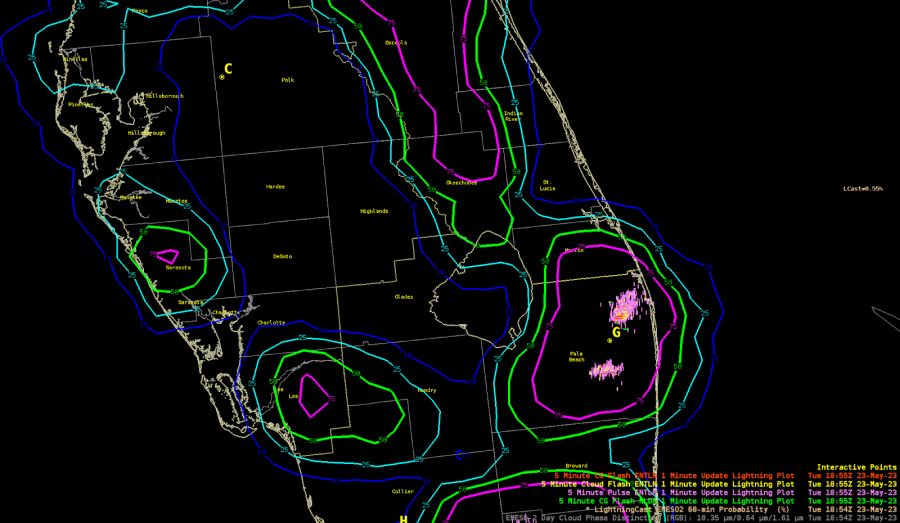
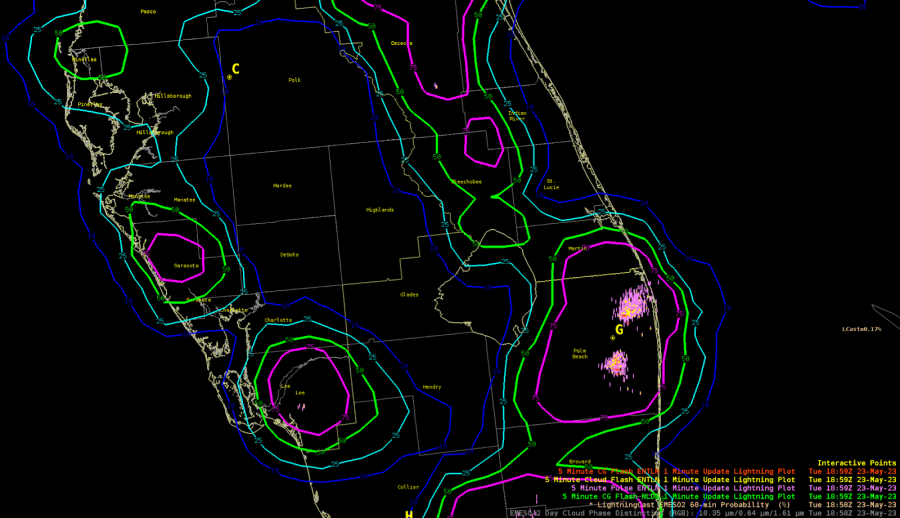
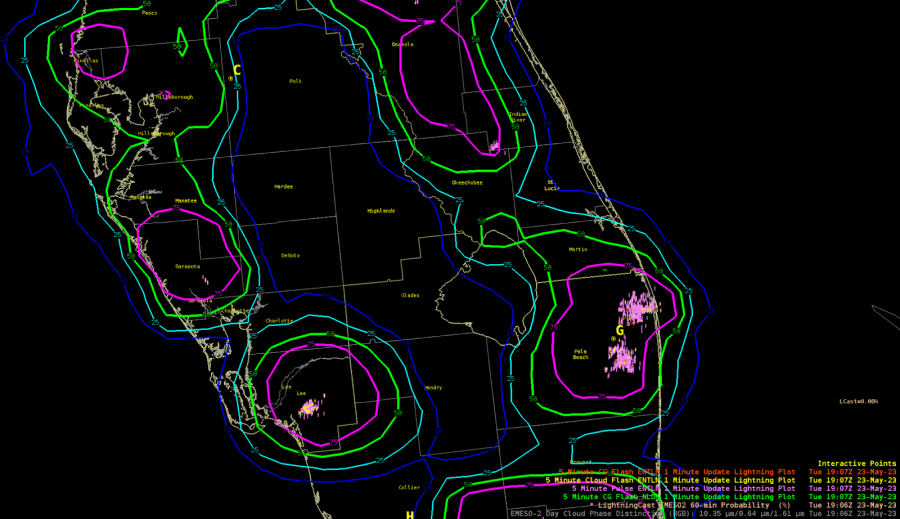
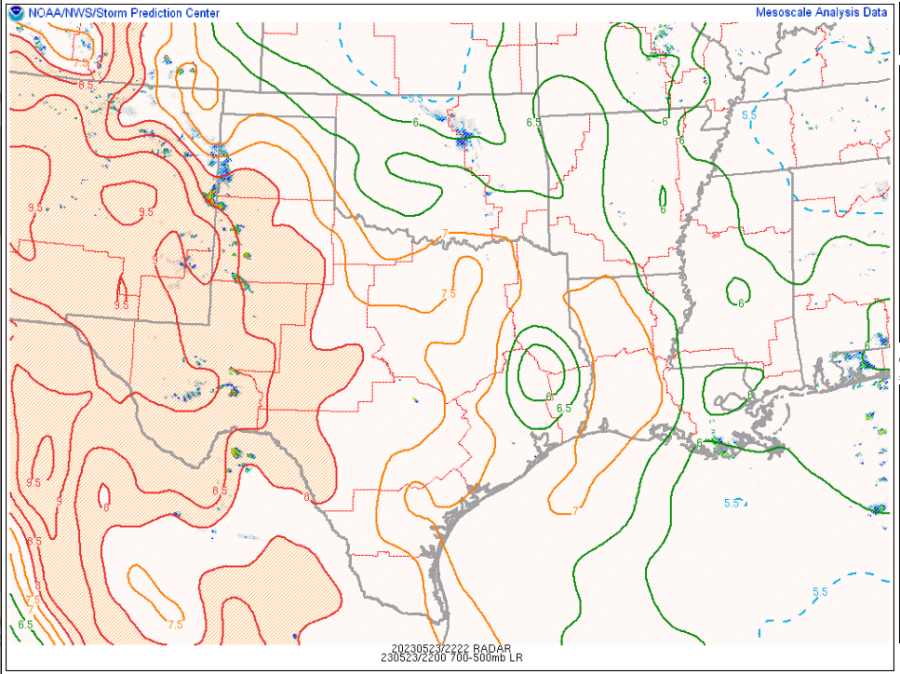
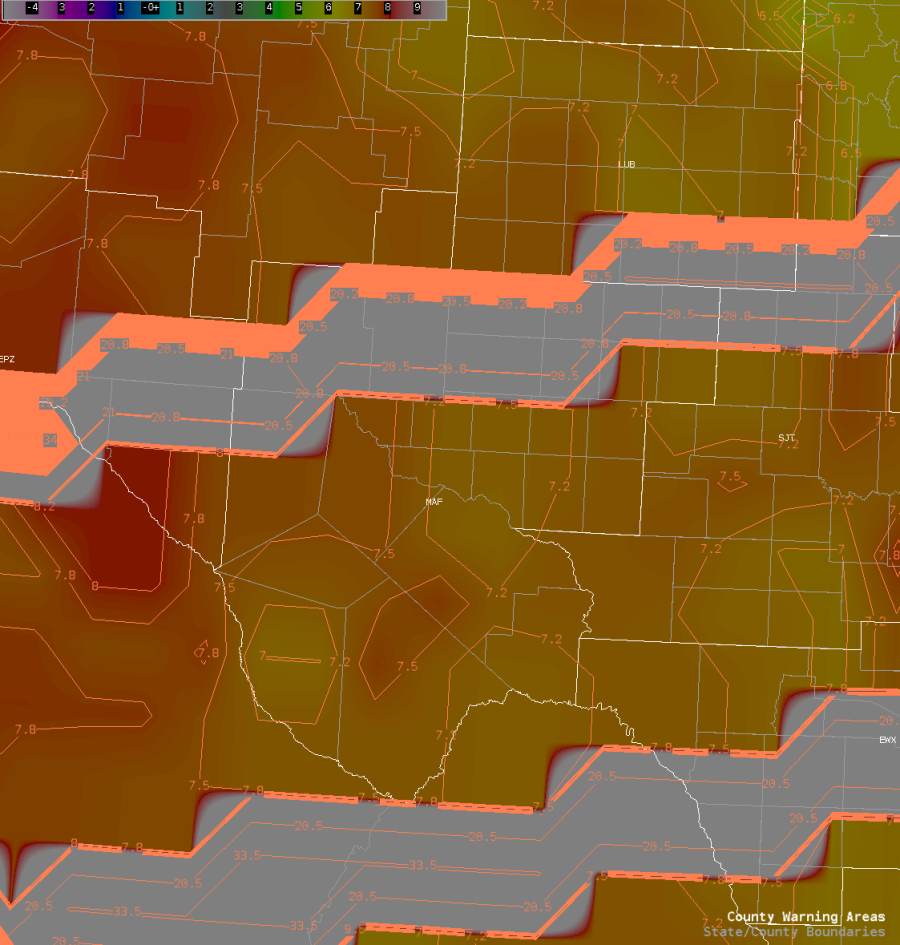
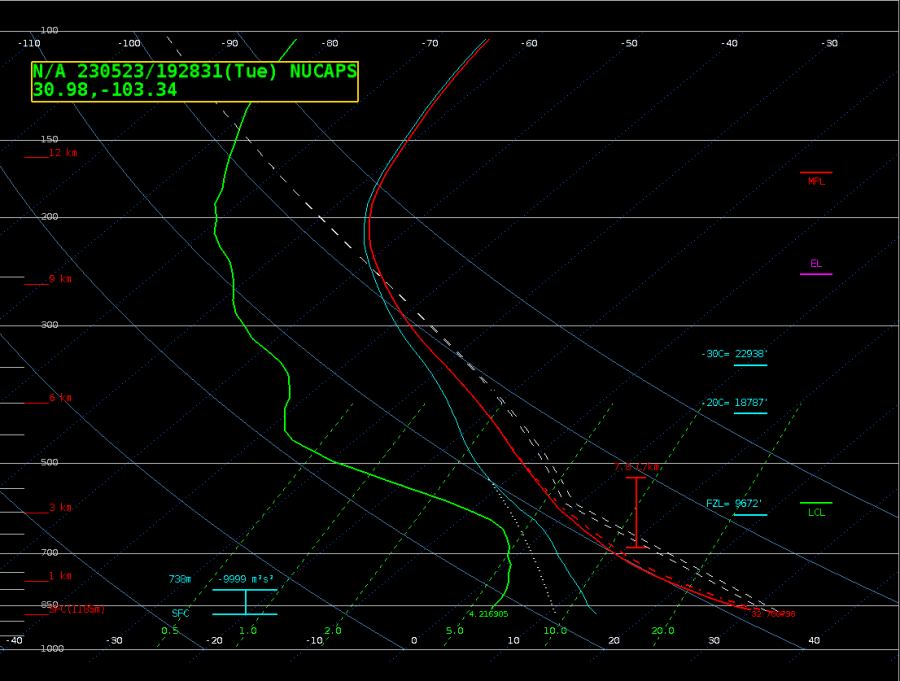

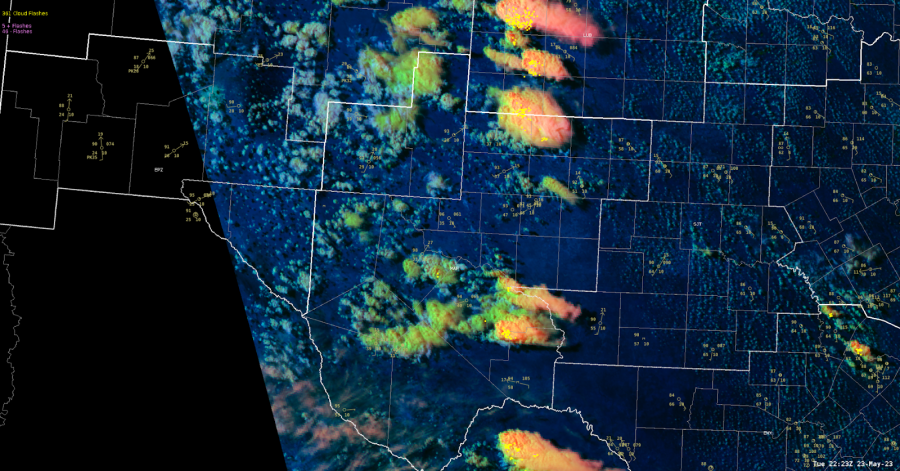
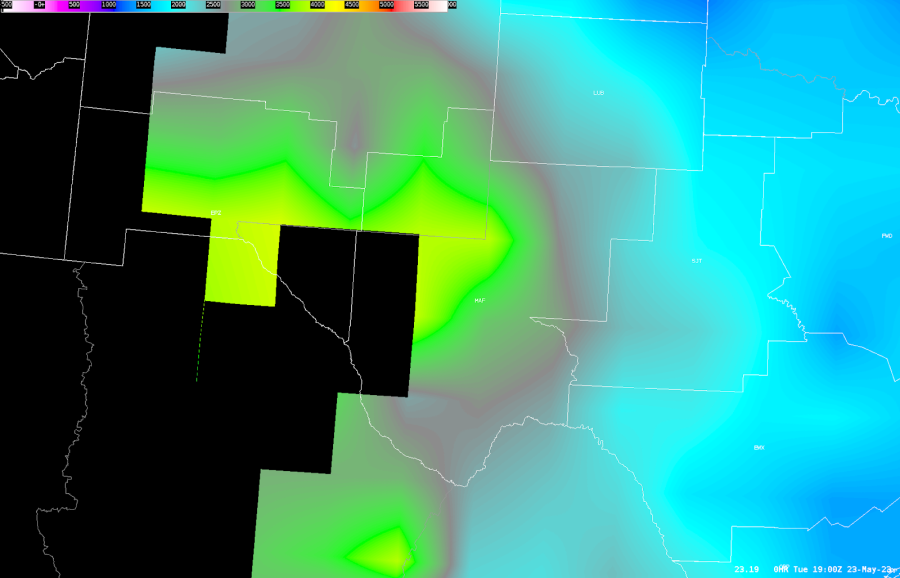
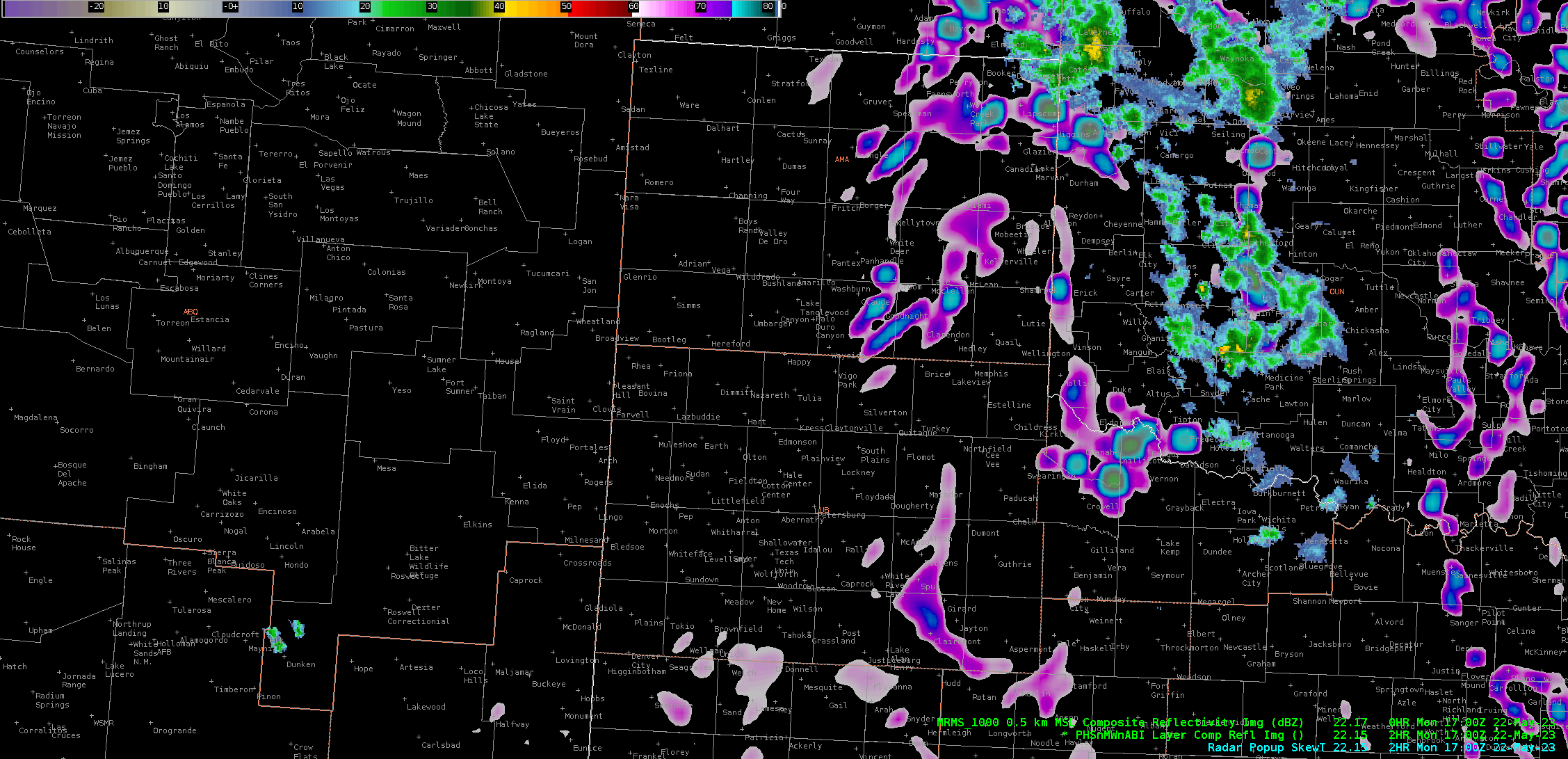
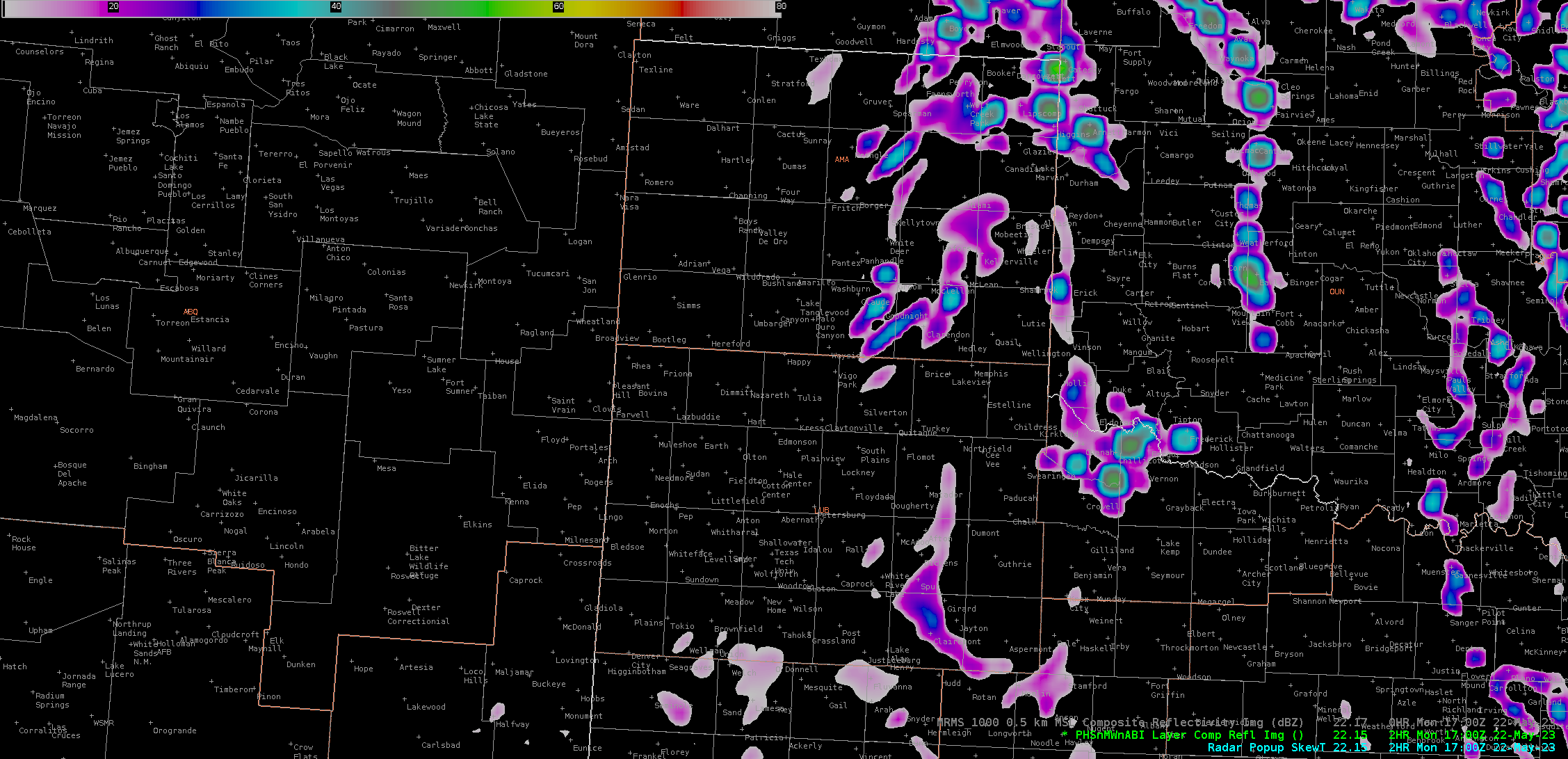
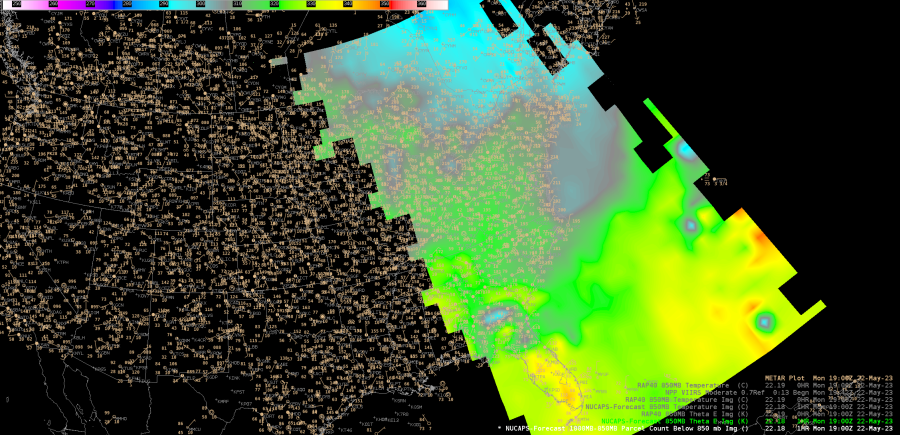
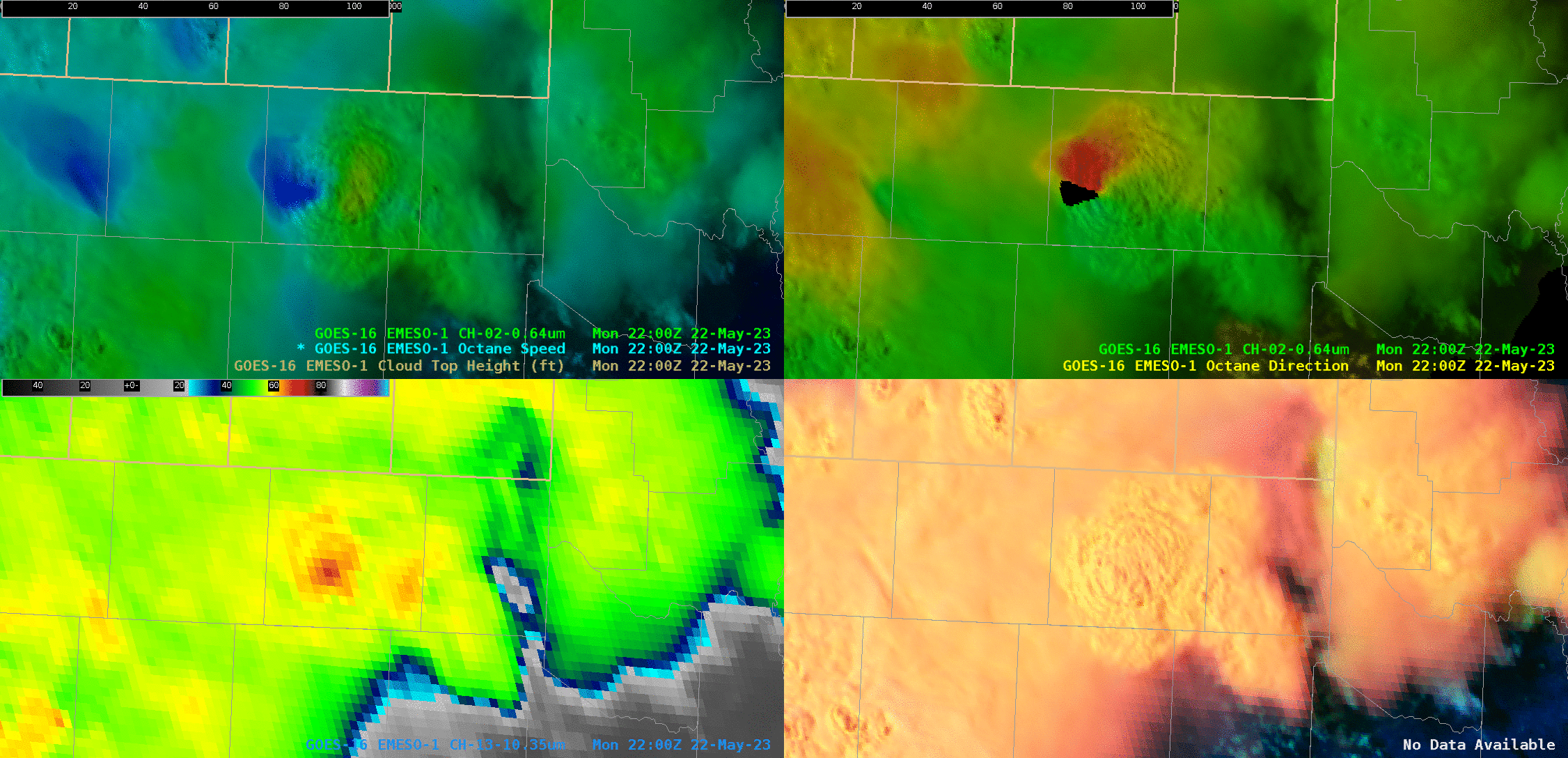
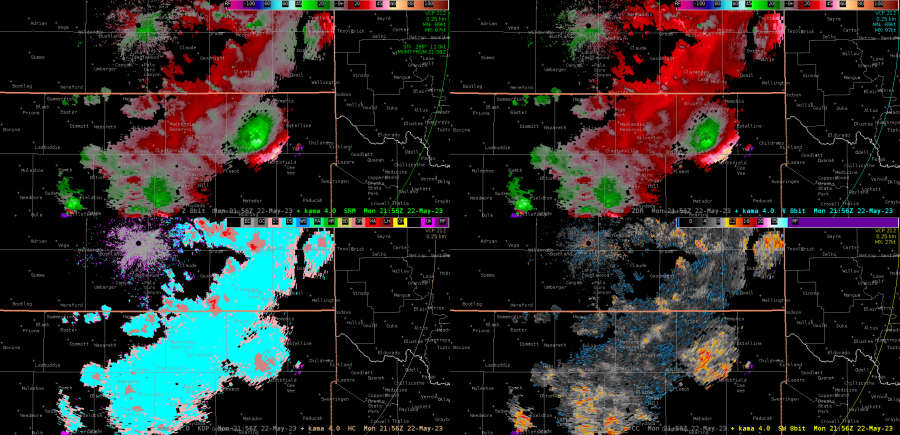
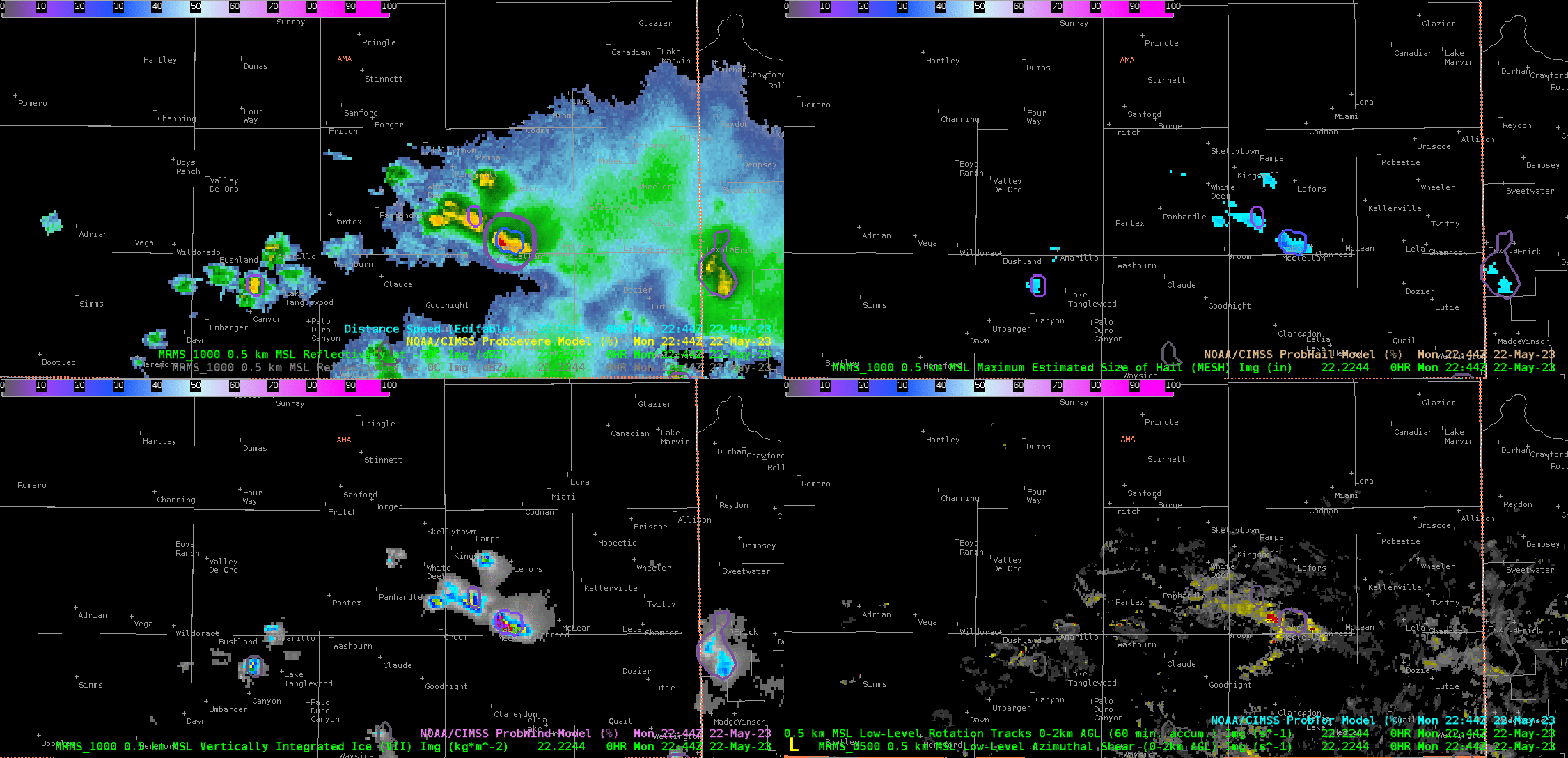
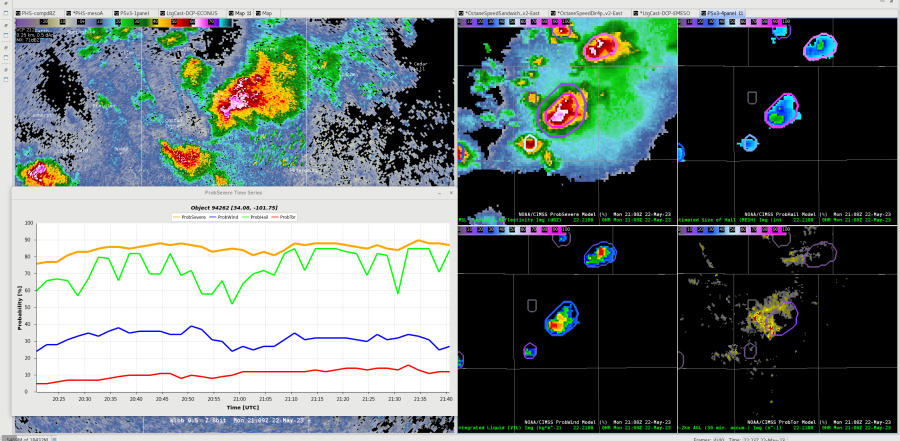

 Below is an image showing the storm’s trends via the ProbSevere Time Series (storm location now just NNW of Anton). Though the ProbSevere values will lag behind the satellite imagery, one can note the storm’s gradual increase in ProbSevere values with the “warming” colors of the Octane Speed product. The values then also level off, before dropping off as the cloud tops become more consistent.
Below is an image showing the storm’s trends via the ProbSevere Time Series (storm location now just NNW of Anton). Though the ProbSevere values will lag behind the satellite imagery, one can note the storm’s gradual increase in ProbSevere values with the “warming” colors of the Octane Speed product. The values then also level off, before dropping off as the cloud tops become more consistent. 